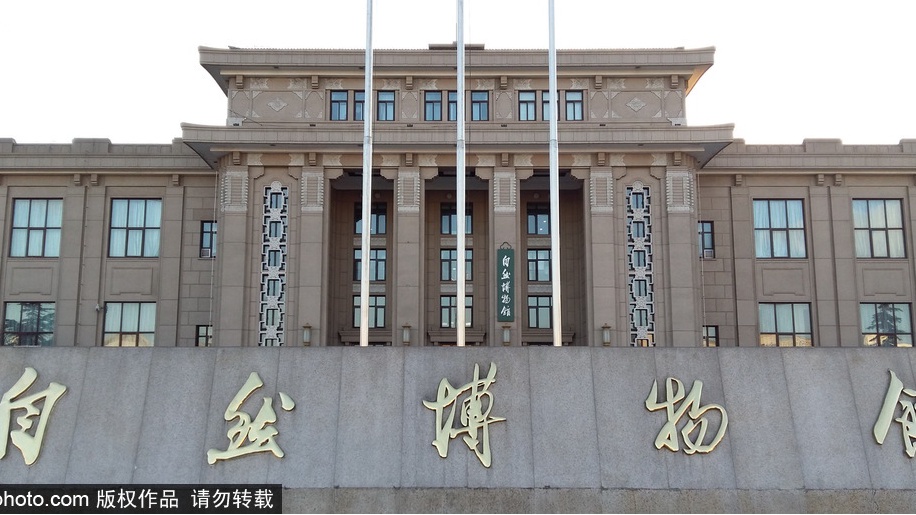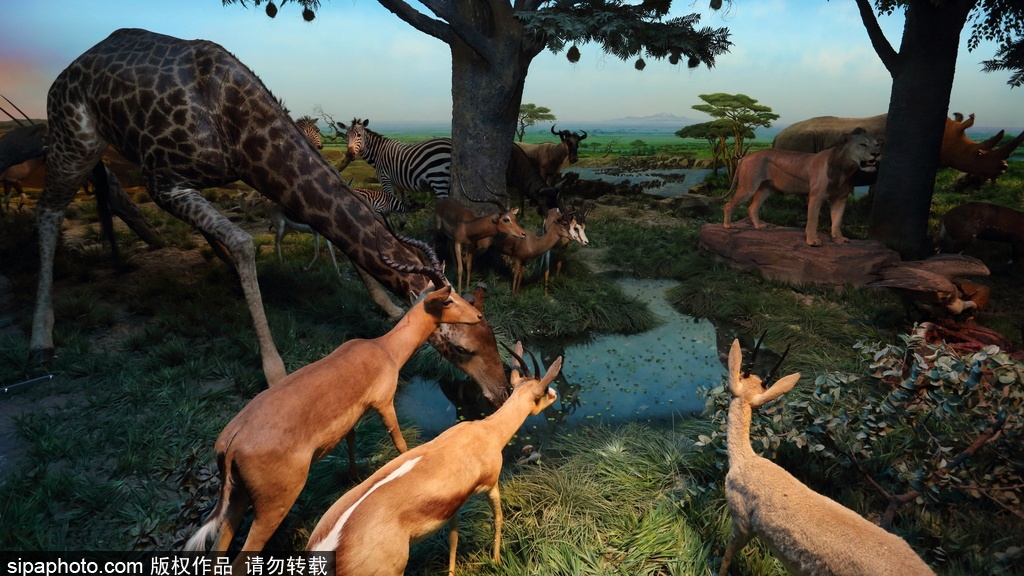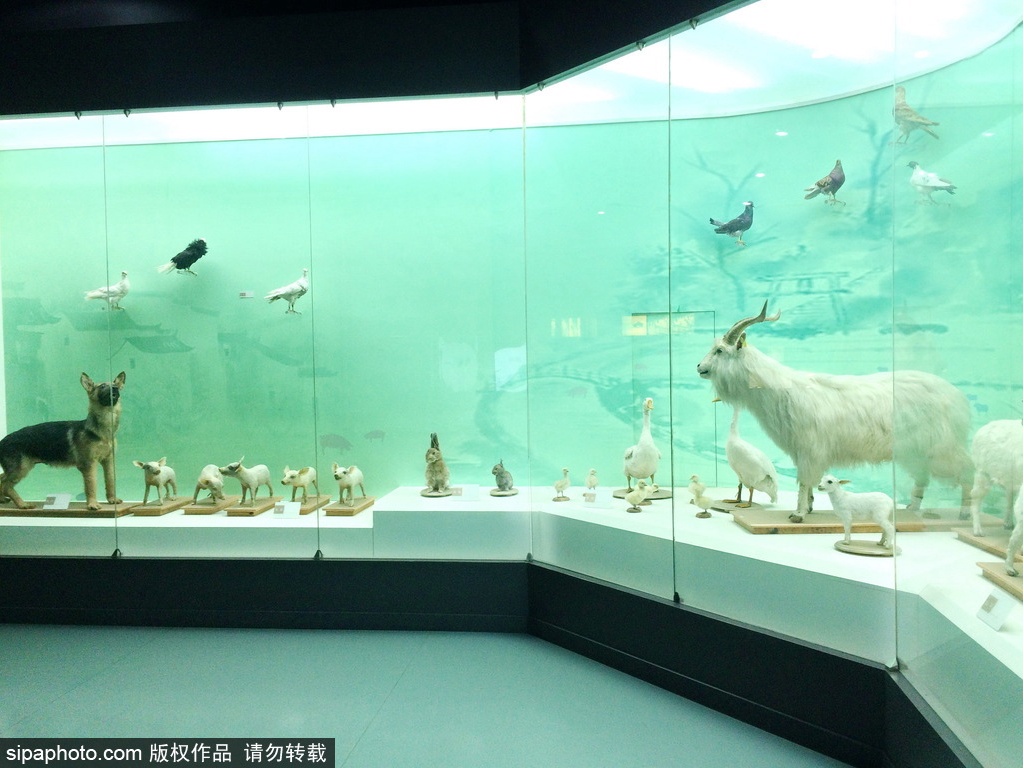Lying in the Tianqiao District on the central axis of southern Beijing, leaning against the Temple of Heaven, the world cultural heritage sites, and facing the modern Tianqiao Theater, the Beijing Museum of Natural History possess superior and special cultural environment. The Museum boasts its rich collections which consist of more than 100,000 items covering cultural relics, fossils, and specimens. The Museum is made up of four basic exhibitions and one dinosaur world exposition. The number of well-restored fossils of gigantic prehistoric mammals ranks the second in the world; the Huanghe River stegodon and dinosaur fossils win fame at home and abroad.

Beijing Museum of Natural History was selected into the “first batch of List of 20th-century Chinese Architectural Heritage”.
Beijing Museum of Natural History covers an area of more than 15,000sqm, with a building area of over 21,000sqm and an exhibition area of 10,000sqm.
The entrance is at the southern side of the gate and the exit is at the opposite; the main entrance of the main building is in the west. The parking lot lies to the southwest of the main building. The Plant Kingdom, the Dinosaur Park, and the African Gallery are at the first floor of the main building; the Gallery of Ancient Mammals and the Gallery of Ancient Reptiles are at the second floor.
Plant Kingdom
Beijing Museum of Natural History opened up Plant Kingdom, a large-scale theme exhibition, to the public in July 2007. Covering an area of more than 800sqm, the exhibition consists of three majors themes - the evolution of terrestrial plants, plant functions and the modern plant landscape. From the prehistoric extinct plant clusters to today's colorful plants, from plants’ micro-structures to the macro plant communities and ecosystems, the plants’ charm is presented in an all-round and multi-angle way.
Starting from the origin of terrestrial plants and following the evolutionary process of terrestrial plants, the Evolution of Terrestrial Plants makes an overall recovery of plentiful extinct plant species and shows the ancient landscape of the primitive terrestrial plants that had just begun to grow on the land. The thriving ferns, the gymnosperms and the early angiosperms demonstrate the beautiful wonders of the prehistoric plants.
Based on the modern plant communities and ecosystems, the Modern Plant Landscape adopts the combination of background pictures and foreground plants, realistically reveals the six typical regional plant landscapes: the deserts, the prairies, the wetlands, the mountains, the tropical rain forests and mangrove lands.
Dinosaur Park
The Dinosaur Park covers a total area of more than 700sqm. 23 living dinosaurs, 2 pterosaurs, and a lizard which first lived with dinosaurs compose difference groups revealing the dinosaur world from the late Triassic period to the late Cretaceous period.
The Museum also has developed excavation site zone in the Gallery, allowing viewers to look at the original burial status of the dinosaurs. In addition, two virtual scenes in the new Dinosaur Park, “Jehol Biota” and “Oceans of Dinosaur Ages” restore the formidable giants in the oceans of Dinosaur Ages.
Gallery of Ancient Mammals
The Gallery of Ancient Mammals covers 700sqm area. The exhibition hall describes in detail the evolution of the Proboscidea, the Perissodactyla, the Artiodactylas, the Carnivores, the Primates and the angiosperms as well as the famous Mountain-Wang Biota.
In the exhibition hall, the audience can see the reconstruction drawings and fossils of teeth and bones of the bemalambda which is the largest mammal on the planet over the same period when dinosaurs extinguished; and they can have a look at the huge elephant family, including the well-known 4-meter-high 8-meter-long Huanghe River stegodon and the platybelodon. Moreover, the audience can find a very eye-catching specimen – the Archaefructus liaoningensis which is the world's first flower.
Gallery of Ancient Reptiles
The Gallery of Ancient Reptiles presents the landscape of more than 200 million years ago to the audience and demonstrates the complicated process in which the vertebrates moved from the oceans to the lands, the representative animals being the crossopterygii, the ichthyostega, the caecilian, and the Dimetrodon.
Gallery of Prehistoric Invertebrates
The 800-square-meter Gallery of Prehistoric Invertebrates displays the flourish of Earth 100 million years ago and describes the history of prehistoric invertebrates from origin to extinction in detail. A number of fossils of Jehol Biota, especially the feathered dinosaur fossils found in western Liaoning, have caught audience’s eyes all the time.
Miraculous Africa

Based upon the rare African animal specimens, the exhibition of Miraculous Africa reproduces the wildlife habitats and, with the help of Chinese and English drawing boards and various novel modern display techniques, presents the life-like typical wildlife species in Africa and gives a comprehensive display of the wonder of Africa. Grand and stunning African plains are presented to the audience with the 360-degree panoramic display technique, the infinite perspective plains created by the natural convergence of landscape and background pictures, and the innovative open animal-featured landscape.
Opening Hours
The Museum is open to the public from 9:00 to 17:00 for free throughout the year and closed on Mondays.
Reservation
Reservation is required to ensure the safety of visitors and the quality of visit.
I. How to Reserve
1. Reserve by Phone: 010—67027702
Time: 9:00—16:00 from Tuesday to Thursday
2. Reserve online: http://www.bmnh.org.cn

II. Regulations:
1. Tickets should be booked at least one day in advance.
2. The tickets for the next 20 days are available until the tickets are all reserved.
3. Reservation under real name is required. Names of and the ID number of visitors, the number of tickets, the visiting date and other relevant information should be registered. Each reservation of every individual should not be more than 3 tickets.
4. For group reservation, the name of the unit, the name and ID number of the leader, the visiting date, contacts, the number of visitors and other relevant information should be provided.
Time for collecting tickets: 9:00—16:00 from Tuesday to Thursday (The museum is closed on every Monday.)
Address: Tianqiaonan Street, Chongwen District, Beijing



